Ta'er Monastery (Kumbum Monastery)
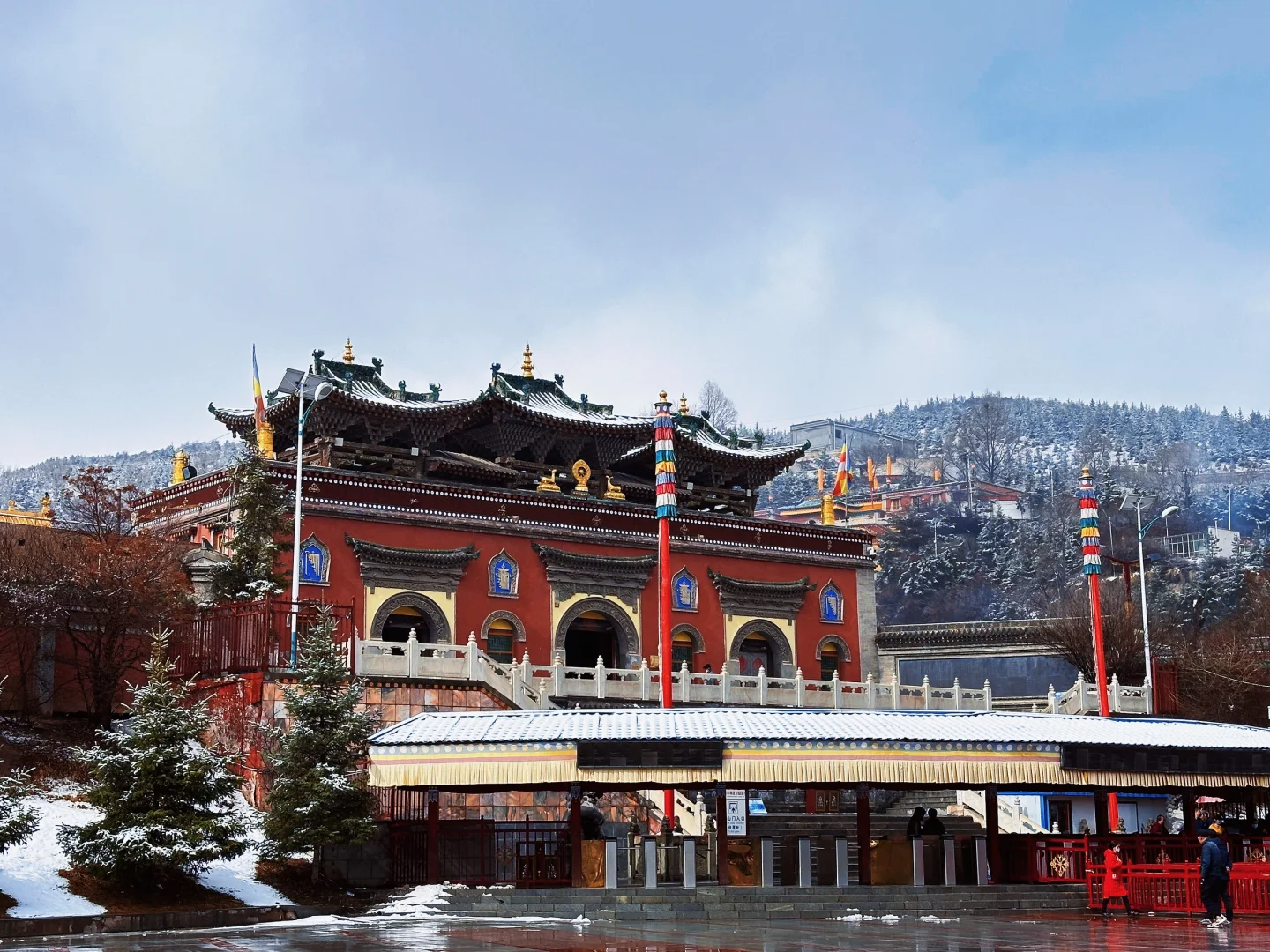
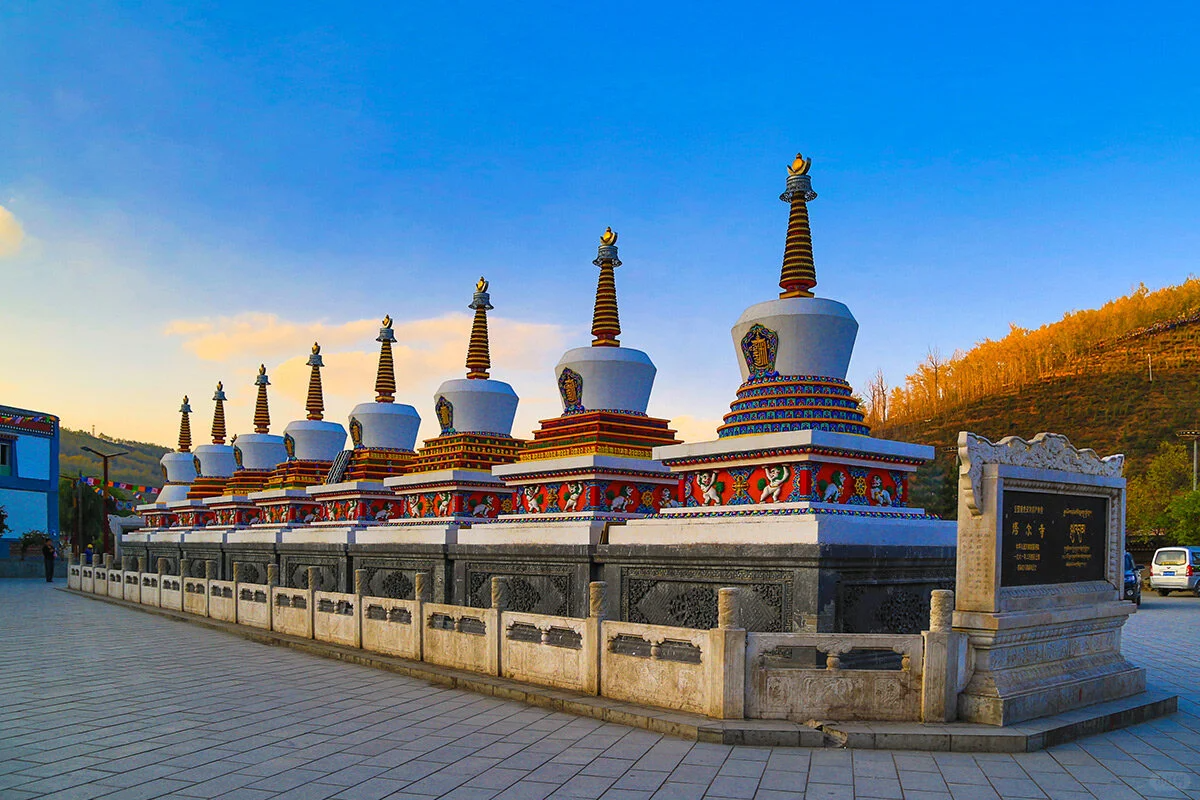
Chinese Name: Ta Er Si(塔尔寺)
Location: Jinta Road, Huangzhong District, Xining City, Qinghai Province
Religious Status: One of the six major monasteries of the Gelug School of Tibetan Buddhism in China
Year of the Initial Construction: 1379
Greatest Feature: The architectural complex combining Chinese and Tibetan art styles
Treasure of the Temple: Three Artistic Wonders(butter sculptures, colorful murals, and barbola)
Ta'er Monastery is one of the six major monasteries of the Gelug School of Tibetan Buddhism in China, and it is also a leading scenic spot in Qinghai Province and a Major Historical and Cultural Site Protected at the National Level, with a history of more than 400 years. It is one of the most popular tourist destinations in Xining with its magnificent architecture, rich treasures and strong religious atmosphere. The butter sculptures, colorful murals, and embossed embroidery are known as the "Three Artistic Wonders", which have a unique national style and high artistic value.
The architectural style of the Ta'er Monastery is a combination of the Han palace and Tibetan flat-roofed style. The main buildings are distributed on two slopes of Lianhua Mountain, forming a complex of Tibetan and Han combined, covering an area of 450,000 square meters. The brilliant Grand Golden Tiled Hall is the main building of Ta'er Monastery, located in the center of the monastery, with green walls and gold tiles.
The temple holds a series of religious activities every year, the most famous of which is the "Four Big Dharma Assemblies". In these religious activities, the monks and priests will chant sutras, sacrifice and other important ceremonies, which are grand and mysterious. Therefore, you can enjoy the architectural art and cultural heritage here, but also feel the Buddhist culture.
Rongwo Monastery
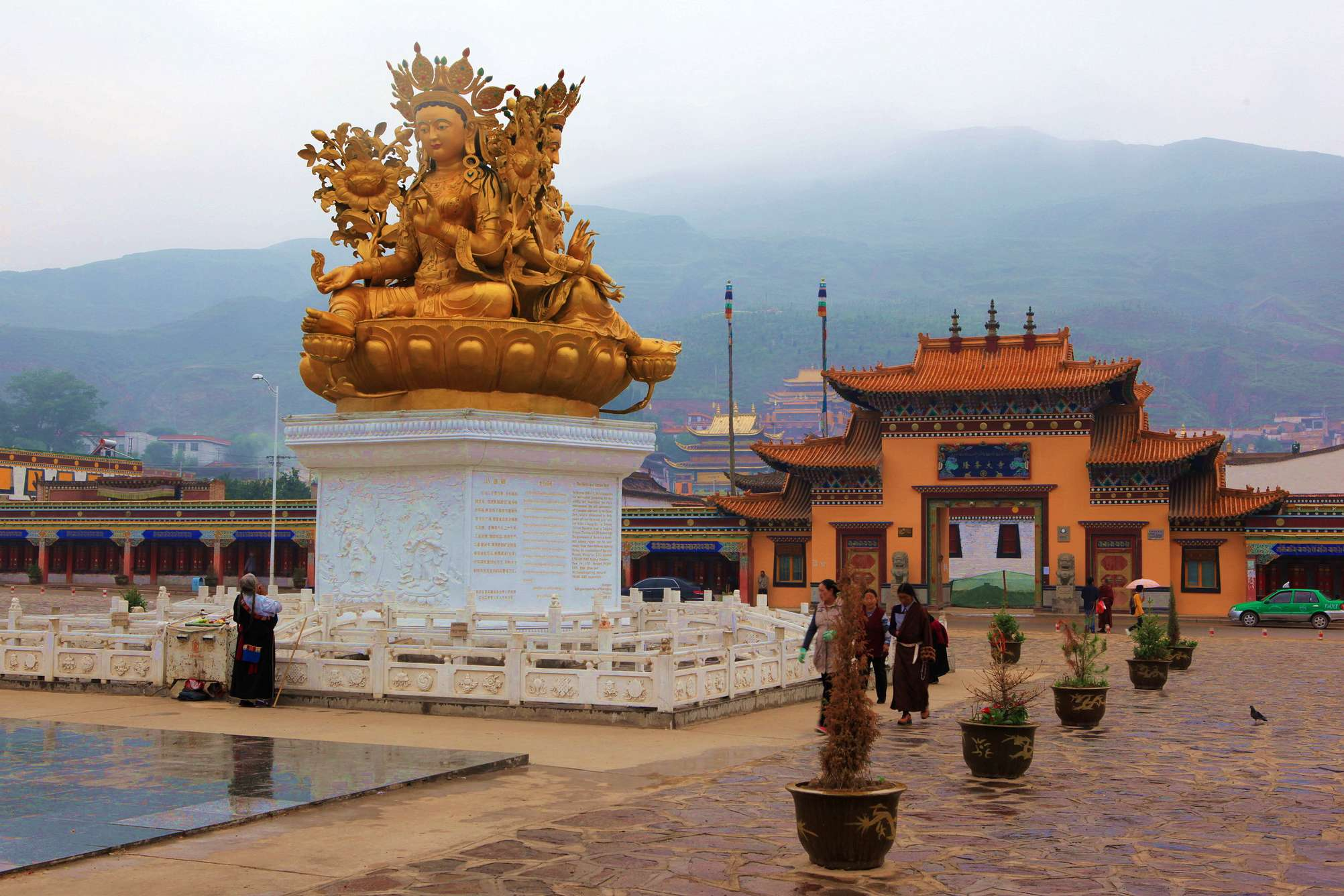

Chinese Name: Long Wu Si(隆务寺)
Location: Longwu Town, Tongren County, Qinghai Province
Year of the Initial Construction: 1301
Treasure of the Temple: The statue of Master Tsongkhapa
Rongwo Monastery is located on the banks of the middle reaches of Longwu River and has a pleasant climate. It is a Major Historical and Cultural Site Protected at the National Level. It is built on a mountain, with a patchwork layout and magnificent decoration. There are three schools: Exotoric Buddhism, Esoteric Buddhism, and Kalachakra. Rongwo Monastery covered an area of 380 mu and had 35 halls in its heyday.
Main Assembly Hall is located in the center of the temple, with a construction area of more than 1700 square meters, with dozens of statues such as Sakyamuni in exquisite shape and solemn, especially the statue of Tsongkhapa Master 11 meters high, the base circumference of 26 meters, and the whole body is gold-plated and studded with gold, jade and precious stones.
Rongwo Monastery is a famous Gelug temple of Tibetan Buddhism. There are various kinds of fine art and precious cultural relics in the temple, as well as many beautifully shaped Buddha statues, murals, embroidery, thangka,etc, and vast Buddhist scriptures and classics.
Arou Temple
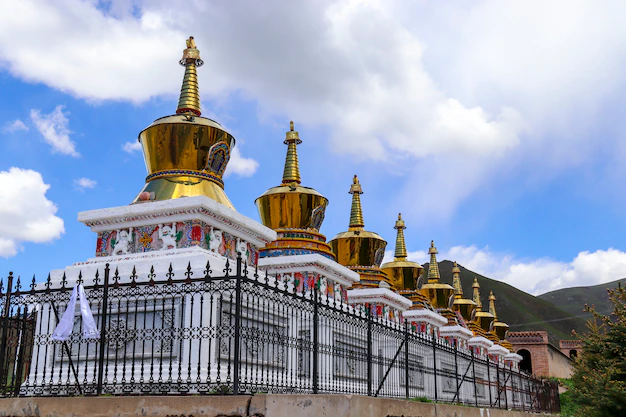
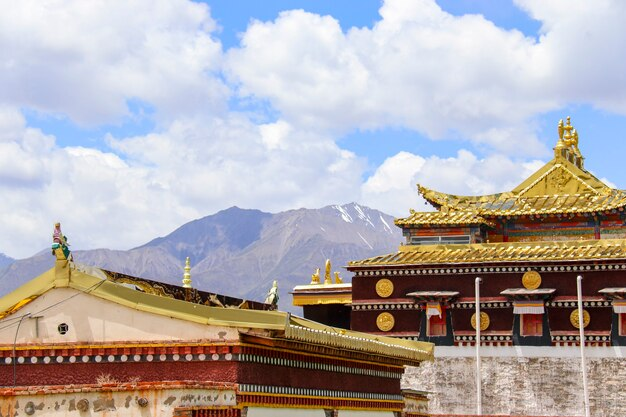
Chinese Name: A Rou Da Si(阿柔大寺)
Location: 21 km southeast of Zhi Ba Bao, Qilian county
Religious Status: The largest and most influential Tibetan Buddhist Gelug monastery in Qilian County
Year of the Initial Construction: Shunzhi of the Qing Dynasty
Greatest Feature: A typical Tibetan traditional courtyard temple
The Arou Temple is at the foot of the Qilian Mountains. As the largest and most influential Tibetan Buddhist Gelug monastery in Qilian County, A Rou Temple not only has a unique architectural style and profound cultural connotation but also carries the historical memory and cultural beliefs of the local people.
Arou Temple was built in the Shunzhi of the Qing Dynasty and is a typical Tibetan traditional courtyard temple. The whole temple consists of a number of buildings, Main Assembly Hall, the Buddhist hall, the monks' houses, etc. These buildings have unique styles and exquisite decoration, especially the murals and sculptures in the Main Assembly Hall, which are full of strong religious flavor and artistic value.
Arou Temple has become a comprehensive temple integrating spiritual practice, cultural inheritance, and tourism. You can feel the unique charm and profound Tibetan culture, and you can also find inner tranquility and peace among the mountains and rivers. Whether for the pursuit of faith or for the exploration of culture, Arou Temple is a place worth visiting!
Wutun Monastery
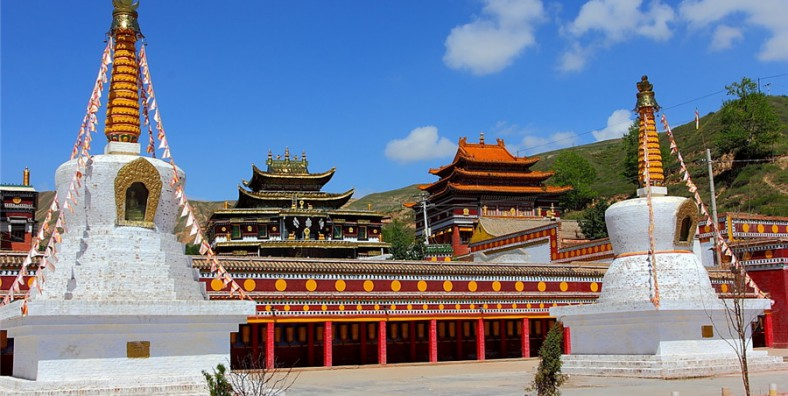
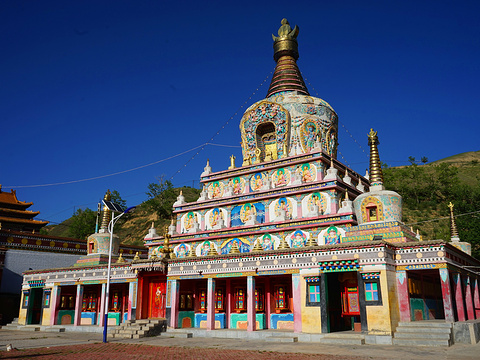
Chinese Name: Wu Tun Si(吾屯寺)
Location: Wutun village, Tongren County, Qinghai Province
Religious Status: In the middle of the 17th century, it became a painting town where everyone could paint and every family took art as their business, so it is also called Wutun Buddhist art.
Year of the Initial Construction: 1385
Greatest Feature: The birthplace of Tibetan "Regong art"
Wutun Monastery is the birthplace of Tibetan "Regong art". It is the most concentrated and typical temple with a collection of Regong Art. It has vivid and colorful murals, embroidery, painting, and sculpture.
Wutun Monastery is divided into Upper (Yango) Monastery and Lower (Mango) monastery, 7 km from the county seat. Upper (Yango) Monastery was built in 1385 and Lower (Mango) monastery was built in 1648. Upper (Yango) Monastery in the collection of Regong Thangka paintings and artworks, as well as Tsongkhapa master spirit bones, various sizes of statues, reliefs, and many other precious cultural relics and "Kangyur" . Important cultural relics in Lower (Mango) monastery has provincial cultural relics such as sandalwood carved Maitreya Buddha statue in the Qing Dynasty.
Princess Wencheng Temple
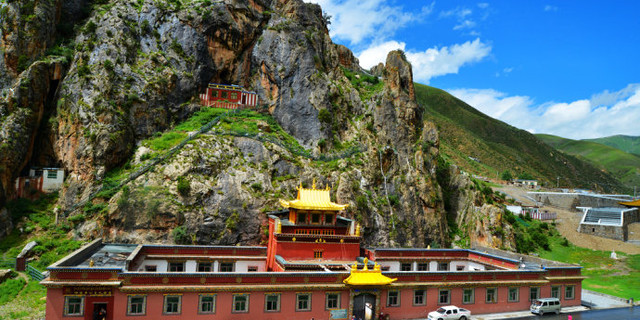
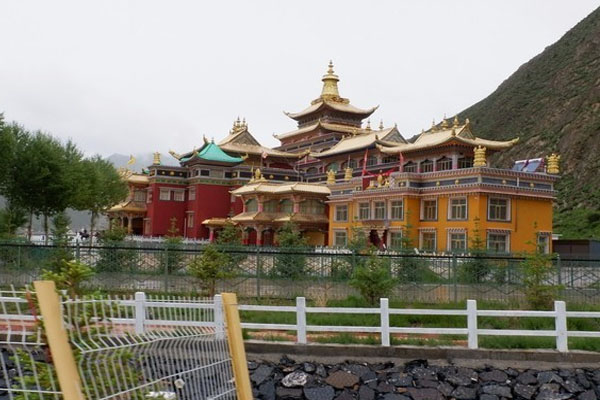
Chinese Name: Wen Cheng Gong Zhu Miao(文成公主庙)
Location: Yushu Tibetan Autonomous Prefecture, Qinghai Province
Year of the Initial Construction: Tang Dynasty
Princess Wencheng Temple has a history of more than 1,300 years. According to legend, it was built when Princess Wencheng entered Tibet, and it is also said that it was built by the local Tibetan people in memory of Princess Wencheng.
The temple is built on the mountain, the main body of the temple is a maroon building, the outside looks like a total of three floors, while the inside is actually a hall. There are a total of nine reliefs of Buddha on the rock wall, and Vairocana is in the center. The other eight reliefs are standing figures through carving, their shapes and costumes have both the early style of Tubo and the artistic characteristics of the Central Plains in the early Tang Dynasty. The mountains around Princess Wenchrng Temple are covered with colorful and magnificent prayer flags .
Princess Wencheng was a royal daughter of the Tang Dynasty. After entering Tibet, she introduced production technology and scientific knowledge from the Central Plains to Tubo one after another and played an active role in communicating the friendship between the Han and Tibetan peoples and promoting political, economic, cultural, and religious exchanges between the Central Plains and Tibetan inhabited areas. Tibetan people hold her in high esteem, and her deeds are widely known among them.
Jyekundo Dondrubling Monastery (Jiegu Monastery)
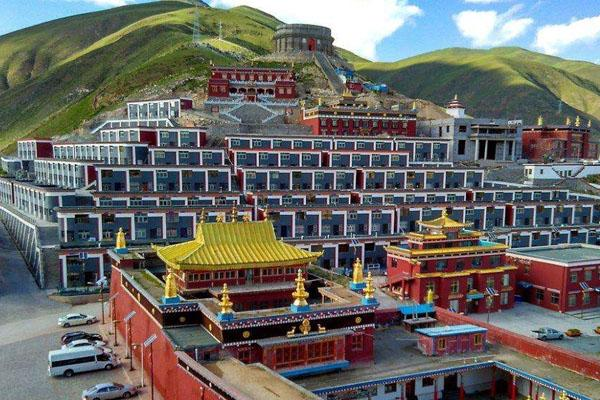
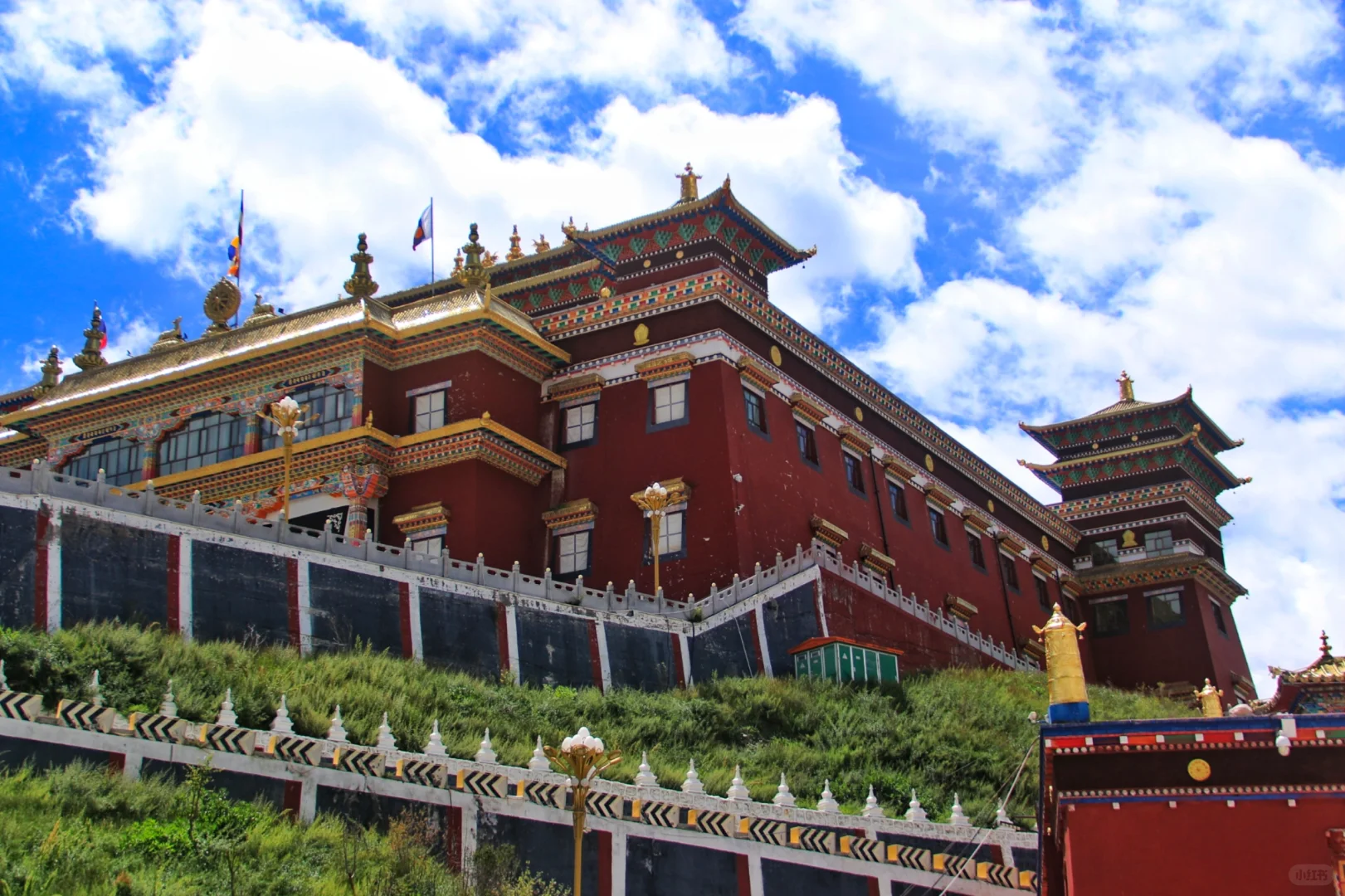
Chinese Name: Jie Gu Si(结古寺)
Location: Jiegu Town, Yushu Tibetan Autonomous Prefecture, Qinghai Province
Feature: magnificent architecture , numerous monks, rich cultural relics
Jyekundo Dondrubling Monastery belongs to the Sakya monastery of Tibetan Buddhism and is the largest and most influential monastery in Yushu. It is built on the mountain, and the temple from a distance has a feeling of stacking layers of pavilions on top of each other. Jyekundo Dondrubling Monastery is well preserved and has numerous cultural relics. It has precious Buddhist artifacts such as Sakyamuni Thangka donated by Phagspa, precious historical relics of the Gesar period, and nearly 10,000 volumes of various Buddhist sutras such as Kangyur.



































